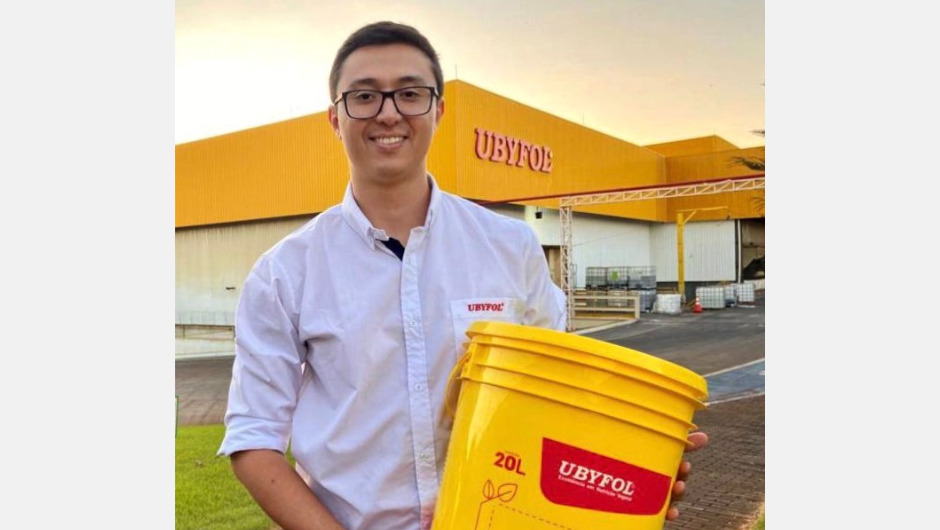Transformations in Brazilian agricultural retail and their impacts on the fertilizer market
By Luiz Fernando Naso, director of fertilizers at Nutrien in Brazil

In the last six months, four different heat waves have hit Brazil. The last of them, in November, considered the strongest, was responsible for recording new temperature records in several states across the country. But, after all, with the climate change and the rain cycle that are expected to directly alter the next grain harvests, how can the producer prepare for this new scenario and avoid a drop in productivity and possible losses not only in 2024, but in future crops?
The climate, as we know, is a decisive factor for any agricultural culture and production, being a guide to the calendar and speed of planting, maturation and development of crops and their productive potential. The increase in temperature, rainfall and rainfall are, therefore, determining factors for the success – or not – of a harvest. When planting occurs, several factors, such as soil humidity, luminosity, rainfall and water regularity, are fundamental to enhancing plant development and achieving maximum productivity of a given agricultural crop.
We are currently in the planting phase of the summer harvest, which is delayed due to adverse weather conditions. This extension of planting will impact the harvest window, that is, the later you plant, the later you harvest. Therefore, the delay in the soybean planting window will have a direct impact on the corn planting window.
With an average cultivation cycle of 110 days, soybean cultivation is basically made up of three major phases: vegetative, reproductive and maturation. In its cycle, rainfall volumes in the order of 550-700 mm/cycle are required. The volume of rain cannot, under any circumstances, be concentrated at a single time, regularity is necessary, especially during the reproductive phase.
We also need to remember that Brazil experiences two main climate phenomena: El Niño and La Niña. The first typically causes droughts in the North and Northeast regions of the country, while La Niña favors the formation of rain in these same regions. The South region is marked by greater volumes of rain during the El Niño phenomenon and, conversely, lower rainfall volumes occur during La Niña. The more intense these phenomena are, the more likely risks will be in crops, whether due to excess or lack of rain, or high or low temperatures.
With this heat wave and in the midst of a volatile climate scenario, the next soybean harvest is, according to figures recently released by Datagro, closer to 148 million tons – a drop, therefore, of 4,2% in relation to 154 million tons for the 2022/23 harvest – which could be in a range of up to 155 million tons, a number that converges with the latest projection released by this agricultural consultancy.
All this uncertainty leaves a clear message to the producer: it is necessary to plan the next soybean harvest now, adopting an efficient and effective planting strategy whose management includes nutritional solutions that avoid a drop in productivity and possible losses resulting from this new climate scenario. Without this being made clear in the harvest plan, the result will certainly fall short of what the soybean farmer expected.
To alleviate the negative consequences on the harvest, it is necessary to use a comprehensive management strategy that includes everything from monitoring climate maps to plant in the “ideal planting window” to soil and seed management, irrigation and high-performance nutritional solutions for crop production. plant. Appropriate agricultural practices, such as integrated pest management and preventive disease control, are essential to preserve the health of the bass leaves, for example, which comprise the lower leaves and lower branches of the plant. This may involve applying fungicides when necessary, regularly monitoring growing conditions, and taking steps to minimize excessive moisture, which is often associated with the development of foliar diseases.
It is worth remembering that healthy leaves contribute to greater efficiency in the production of nutrients and the synthesis of carbohydrates, resulting in more vigorous growth and adequate grain formation. Maintaining the health of these leaves is essential to ensure robust grain development and optimize agricultural yield. In this sense, the producer can use high-performance solutions, available on the market, in soybean crops, which make the plant more resistant against biotic and abiotic stresses, together with copper, which acts to induce resistance, making the plant less susceptible. to the pathogen and providing amino acids that minimize stress.
Another valuable tip is regarding carbohydrates. To obtain the accumulation of sugars, it is necessary to use specific nutrients that influence the synthesis and accumulation of carbohydrates. In this way, the producer can apply high-efficiency mixed mineral fertilizers and, with this, the transport of photoassimilates is enhanced, helping to improve the quality of the harvested grain and increase the productivity of the crop.
By Miguel Kenzo (in the photo), technical market development coordinator at Ubyfol

Receive the latest agriculture news by email